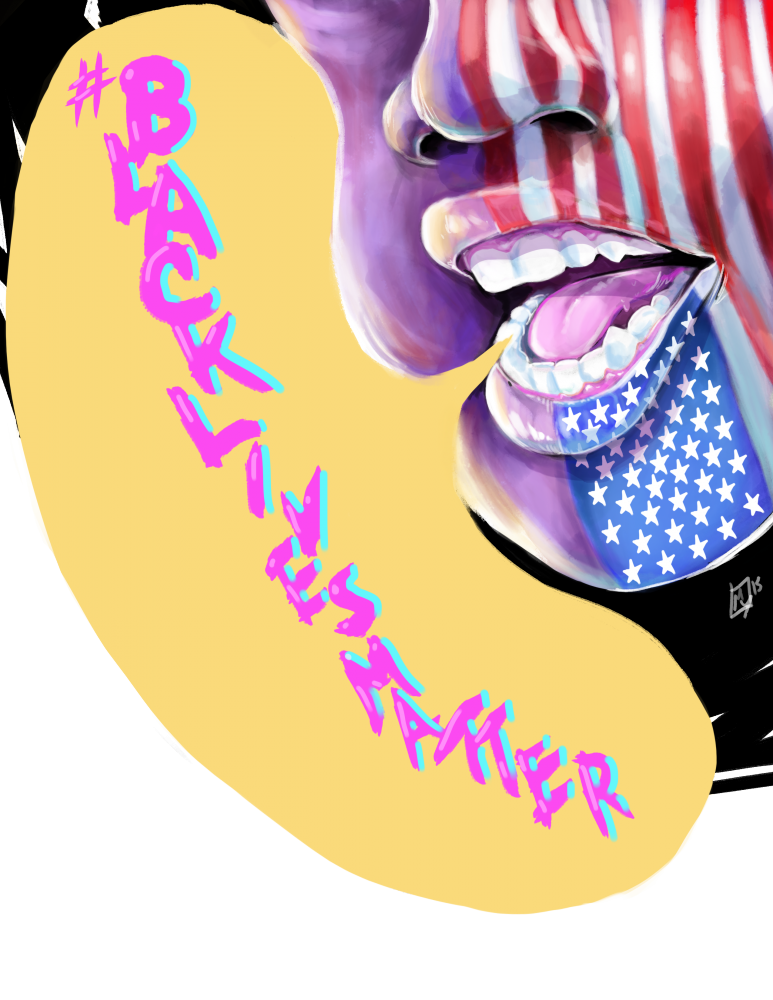Civilians Catalyzing Change: Protests in Rochester
by Bryanne McDonough | published Sep. 25th, 2015
“I have an ideology that protests and on-the-ground movements are what change society,”Zakary Skinner, a former Biomedical Science major at RIT and self-described revolutionary socialist, said. "That’s why they’re
Protests around the country are getting more attention as communities demand to have their needs recognized. The recent protests in Baltimore, Maryland and Ferguson, Mo. sparked a nationwide movement commonly known as "Black Lives Matter."
Rochester has had its share of protests, demonstrations and strikes. Citizens use these events to bring to attention the issues that need to be addressed in the city. Change starts with the people, and they will make themselves heard.
People and Protests
Although protests are often designed to seem spontaneous, that is not usually the case. From organization to implementation, protests are carefully planned out to ensure that the intended message, whatever it may be, is successfully conveyed. Location, timing and wording are all key factors in planning a protest.
Organizers must also gather support; a protest without people behind it doesn’t hold much weight. Gathering manpower involves calling activist friends and reaching out to other organizations. These tactics are vital to ensure that the proper message is sent to the community.
“We tend to have more peaceful marches,” said Patrick Flanigan, the new media editor for the City of Rochester’s Communications Bureau. The protests that Skinner described, including strikes for the Fight for Fifteen movement and Rochester's demonstrations for Baltimore and Ferguson, were peaceful while still serving their intended purpose.
Most demonstrations are marches or gatherings outside government buildings, although one protest Skinner participated in involved lying down in the streets to block major intersections; this type of protest, which is known as a “die-in,” was held around the country after the Baltimore and Ferguson trials.
As an activist, Skinner has both participated in protests and helped organize some that have been held at RIT. His activism career began where he grew up in Tucson, Ariz. when he began to protest for immigrant rights.
“The way that I was learning history was like, there’s all these problems, and occasionally some dudes in a board room fix something a little bit, but it’s usually going to get bad in the long run. Like, what’s the point?” he asked. Instead, Skinner learned that the way citizens make change is by protesting to make themselves heard.
The way citizens make change is by protesting to make themselves heard.
“Awesome” is how Skinner described participating in protests. “It’s refreshing to see so many other individuals engaging in the same ideas."
While the reasons people protest are different, their end goal is the same: citizens want to know that their voices are heard and their governments listen and take action.
The City and Protests
“[The mayor and the police chief] are accessible and open to what the people want,” according to Jacqueline Shuman, public information officer for the Rochester Police Department (RPD). Communication between the citizens, the government and the police department is necessary for a city to run smoothly.
“If there’s an issue or incident, then [the mayor and police chief] get in front of that incident, before people start making assumptions, to show people that we have nothing to hide, this is what happened,” explained Shuman.
“Everybody wants a peaceful city … if something does happen, then it is addressed,” Flanigan said. The government and police department work together to ensure Rochester remains a happy, safe community. Protests are one way for them to get input from citizens about what they want to change in the city. Flanigan suggests that anyone who is planning a protest contact the Office of Special Events to ensure that everything runs smoothly. If it is going to be a larger protest, a permit may be required.
The city tries its best to be open to the people’s needs. However, it is not always easy.
“There are people who want change faster than we can bring it on,” explained Flanigan. Change takes time, but battle after battle, protesters are pushing it through.
Police and Protests
“Police are always [at protests] to maintain crowd control, maintain safety of the people that are protesting as well as the people that are in the public,” said Shuman. Skinner said that he has always noticed a police presence at protests. Sometimes they seemed unnecessary, but other times they were helpful with redirecting traffic, according to his experiences.
Interactions between police and protesters tend to be tame in Rochester. The police only step in if the protesters are blocking roads or sidewalks, being unruly or breaking the law. During protests in the last year, police have made
Many of the high-profile protests around the nation address the issue of police brutality; the RPD is trying to take the necessary steps to make sure that such protests are unnecessary here in Rochester. They are currently in the process of obtaining body cameras for the police officers, which would help make sure that both citizens and the police get the story straight.
The RPD also has programs in place intended to build trust with the community. One such program is Books and Bears, in which police officers carry around stuffed animals and books to help comfort children they encounter on duty.
Undeniably, protests are a fundamental part of the history of this country. The Declaration of Independence, the Boston Tea Party, the Civil Rights Movement, women’s suffrage and many other major steps toward a more equal and independent nation have been achieved because of protests.
Great change starts with the citizens.
Great change starts with the citizens. As Skinner says, battles are won by activists, not just “some dude signing something."



